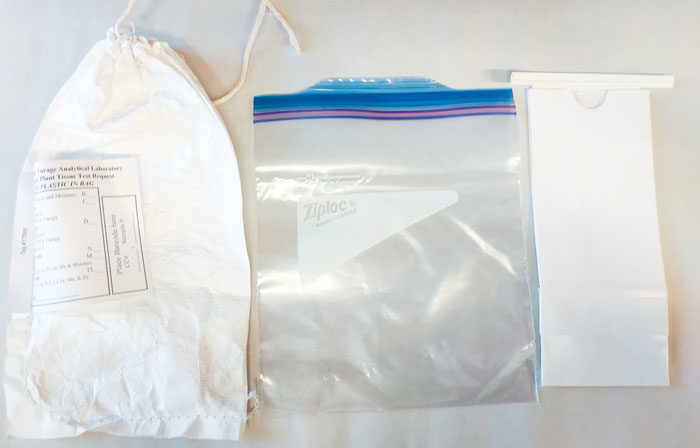No-Till Farmer
Get full access NOW to the most comprehensive, powerful and easy-to-use online resource for no-tillage practices. Just one good idea will pay for your subscription hundreds of times over.

PAPER OR PLASTIC? Oklahoma State University (OSU) scientists say their research shows the kind of bag used to hold soil samples and how quickly samples are submitted to the lab can change soil test results. Bags made of a breathable material known as SWFAL (L) performed the best, as OSU data showed no significant impact of storage or time on soil nitrate levels in those bags. Photo: Oklahoma State University
How soil samples are treated after they leave the field can have dramatic effects on soil test accuracy, according to studies in Oklahoma and Kansas. Inaccurate tests can lead to both under and over fertilizing crops, particularly if sampling takes place when conditions are higher than 80 degrees F
Recent Kansas State University (KSU) research by soil fertility specialist Dorivar Ruiz-Diaz showed significant changes in soil test nitrogen (N) credits occurred between refrigerated and unrefrigerated samples over a 14-day storage period.
“Soils are home to a diverse population of microorganisms, many of which help decompose crop residue and cycle nutrients in the soil,” Ruiz-Diaz says. “This nutrient cycling is crucial for crop production but can skew soil test results if it continues in soil samples after they have been collected.”
The N cycle in the soil is particularly complex and is strongly influenced by microbial activity and, therefore, temperature and soil moisture conditions. During the process, N contained in the organic matter undergoes several transformations, ultimately converting it to plant-available ammonia, also known as mineralization.
Ruiz-Diaz says microbial activity conditions continue as long as temperatures and moisture levels are conducive to their activity. As a result, soil tests for plant-available N have the potential to change substantially if samples are not handled correctly. This is important because such tests are used to determine the profile-N credit and, ultimately, adjust N fertilizer recommendations.
The KSU scientists demonstrated the changes which can happen if soil sample submission is delayed by…